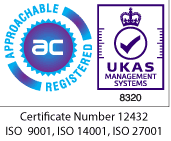Leading the way with Innovation
Invention is the key to longevity
Creating a solid foundation for a lifecycle of innovation
Your innovation pipeline and lifecycle is an essential growth catalyst, but very few companies have a successful methodology in place.
Creating the right conditions for innovation requires a high level of internal organisation as well as the necessary frameworks, tools and communication channels to plan, design and execute your ideas. Done well, an innovation pipeline can generate exponential ROI, disrupt your market and widen the gap over your competitors. Put simply, companies that consistently innovate will stand the test of time.
“If you look at history, innovation doesn’t come just from giving people incentives; it comes from creating environments where their ideas can connect.”
Steven Johnson
94%
Of managers are dissatisfied with their company's innovation
<50%
Of companies have a formal innovation process
84%
Of executives agree that innovation is vital for growth strategy
$3.4tr
The amount invested globally on innovation in 2020
Our unique Approach
Innovation strategies that give exponential ROI
End-to-End Support
From the initial strategy ideation through to a fully scaled implementation, our focus remains on empowering you with the crucial innovation capabilities required for launching and sustaining products at scale.
Customer Focus
Our primary focus is aligning your objectives with the expectations and demands of your customer base. This customer-centric approach guarantees that your innovation efforts are precise and impactful.
Innovation Labs
We work with a range of partners who specialise in innovation labs and workshops—as well as working with students, schools and universities to create mutually beneficial links with your local communities.
Culture of Innovation
We can help you build an innovation culture that embeds innovation strategies and feedback loops across your organisation.
Speak to one of our experts
How we help our clients
Our team of experts has decades of experience providing Innovation strategies to both private and public companies
Innovation Strategy
By analysing current market conditions and internal capabilities, we can support you to create a clear and actionable plan to promote innovation, establish goals, and develop a structured process for ideation and delivery, all while remaining aligned with your broader business strategy.
Product Development
We are equipped with Product Development services to support you in bringing a product to market at any stage in the process, from ideation, opportunity analysis, and validation, to market research, design, prototyping, and launch.
Innovation Workshops
Our experts can design and implement interactive sessions and encourage participation from your organisation to promote creativity and collaborative thinking in order to drive innovation. These can be tailored to address any specific challenges that you are facing, or focus on any opportunities on your horizon.
Our Process
An iterative approach to innovation

1| Strategy
Design an innovation strategy that aligns with your mission-critical goals. We conduct external analysis to grasp the trends influencing customer behaviour and market dynamics, which allows us to identify high-return domains for your innovation investments
2| Workshops & Labs
We focus on dismantling the traditional barriers that hold back creativity and collaboration, such as silos and geographical limitations. Our goal is to cultivate a culture of innovation throughout your company, ensuring that every corner of your business is engaged and contributing to your pipeline.
3| Sprints
In a world where product and business model lifecycles are rapidly shrinking, immediate and bold steps are vital. Collaborating closely with our clients, we engage in a dynamic, sprint-based methodology to swiftly develop and release minimum viable products (MVPs) that align with the overall strategy
4| Lifecycle & Pipeline
We identify a strategic course to acquire the capabilities required to foster innovation; whether it be through corporate venturing, forging strategic partnerships, making targeted acquisitions, or fostering internal development. This ensures your innovation ecosystem remains dynamic, scalable, and aligned with goals.
Our team can be your team
Our team of experts have multiple decades of experience across many different business environments and across various geographies.
We can build you a specialised team with the skillset and expertise required to meet the demands of your industry.
Our combination of expertise and an intelligent methodology is what realises tangible financial benefits for clients.
CONTACT THE TEAM
Our Innovation Experts
Rachi Weerasinghe
With over 30 years of experience leading international, multi-disciplined, and diverse teams, Rachi is highly experienced in IT and digital strategy, Operating Model design, change management, ERP applications, IT Operations, and data strategy.
Innovation Case Study
Delivery of Global EV Charging Hubs
A multinational client wanted to invest into network infrastructure (WAN, LAN, WLAN) to provide EV charger connectivity with a PCI compliant payment solution, in order to deliver a reliable and secure service and the best customer experience possible across a portfolio of global sites.
The goal was to provide the same experience and services on all EV charging sites that carry the client’s logo while not being directly in charge of making decisions as to which locations will be equipped with EV chargers.
This EV charging programme delivery needs to be closely aligned with other network upgrade programmes running simultaneously on all customer owned/operated sites in multiple countries.
The client approached us to support the development and implementation of a ‘cookie-cutter’ network connectivity solution that would be accepted and implemented in cooperation with their teams responsible for the deployment.
Industry Insights

Get in touch with our team today
Case Studies
Our team has had the privilege of partnering with a diverse array of clients, from burgeoning startups to FTSE 100
companies. Each case study reflects our commitment to delivering tailored solutions that drive real business results.
CASE STUDIES
A little bit about Cambridge MC
Cambridge Management Consulting is a specialist consultancy drawing on an extensive global network of over 200 senior executives in 22 countries.
Our purpose is to help our clients make a better impact on the world.
ABOUT CAMBRIDGE MC











